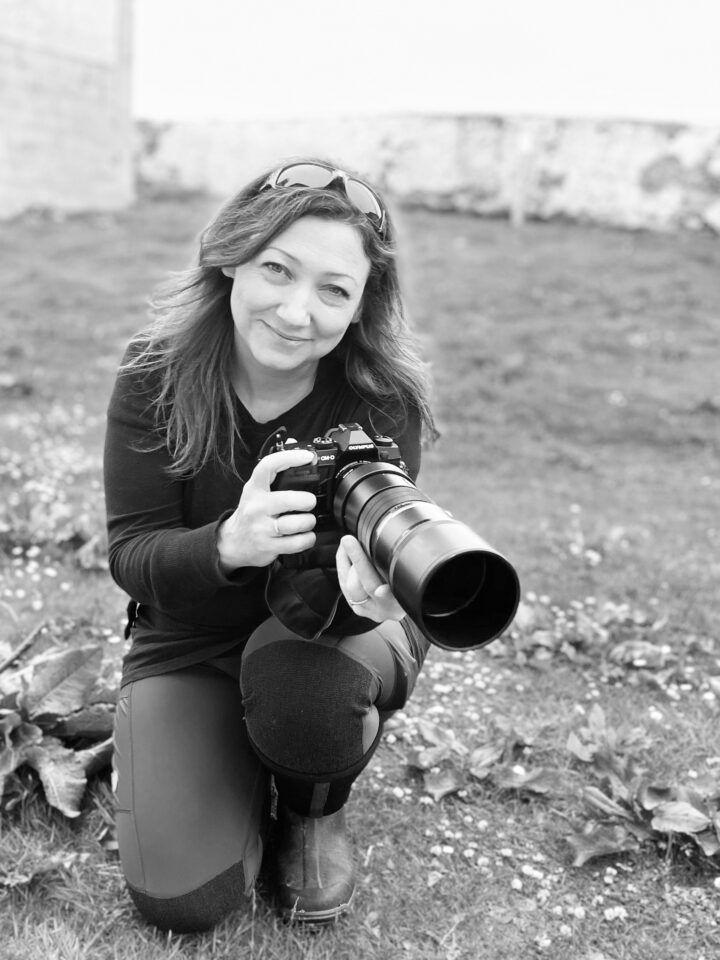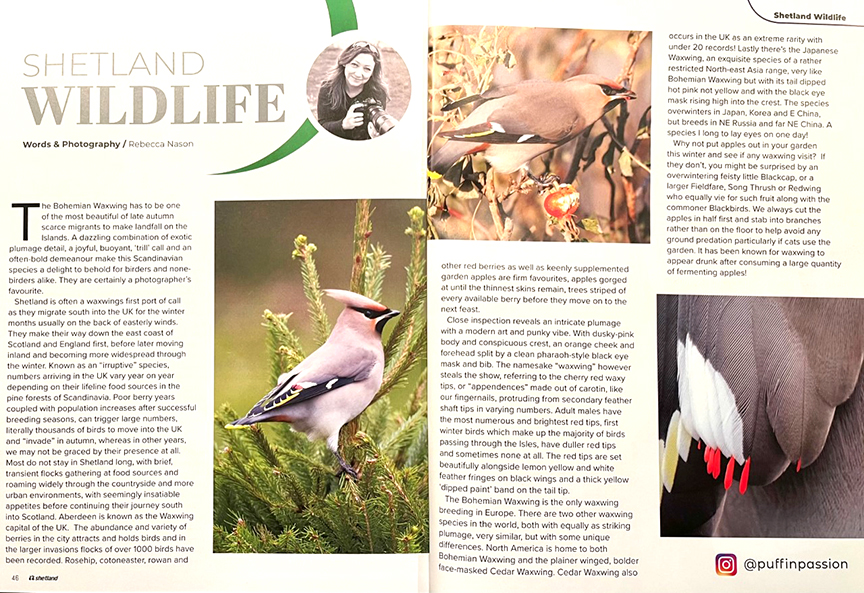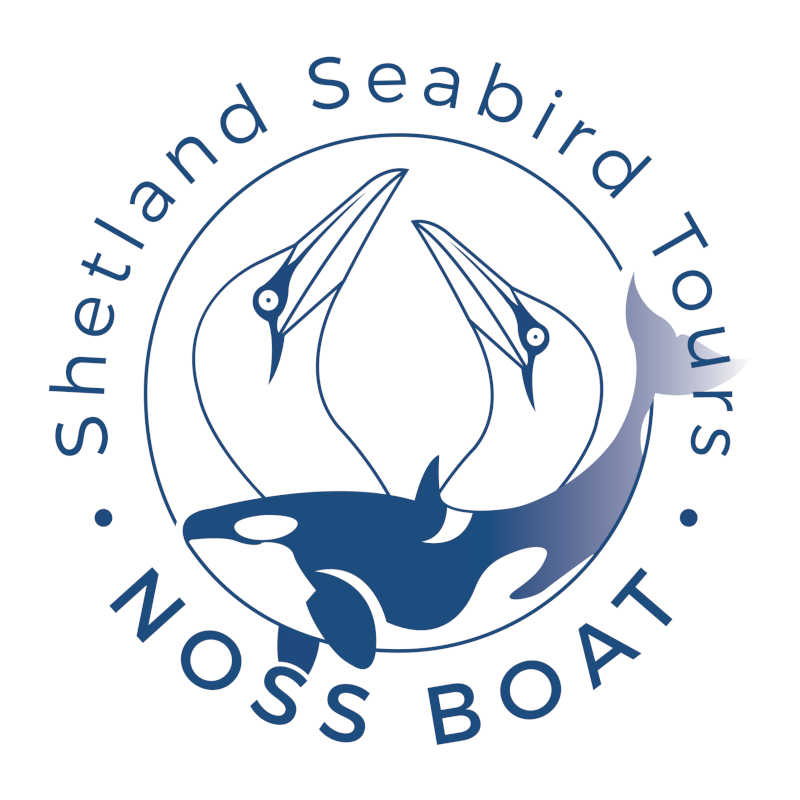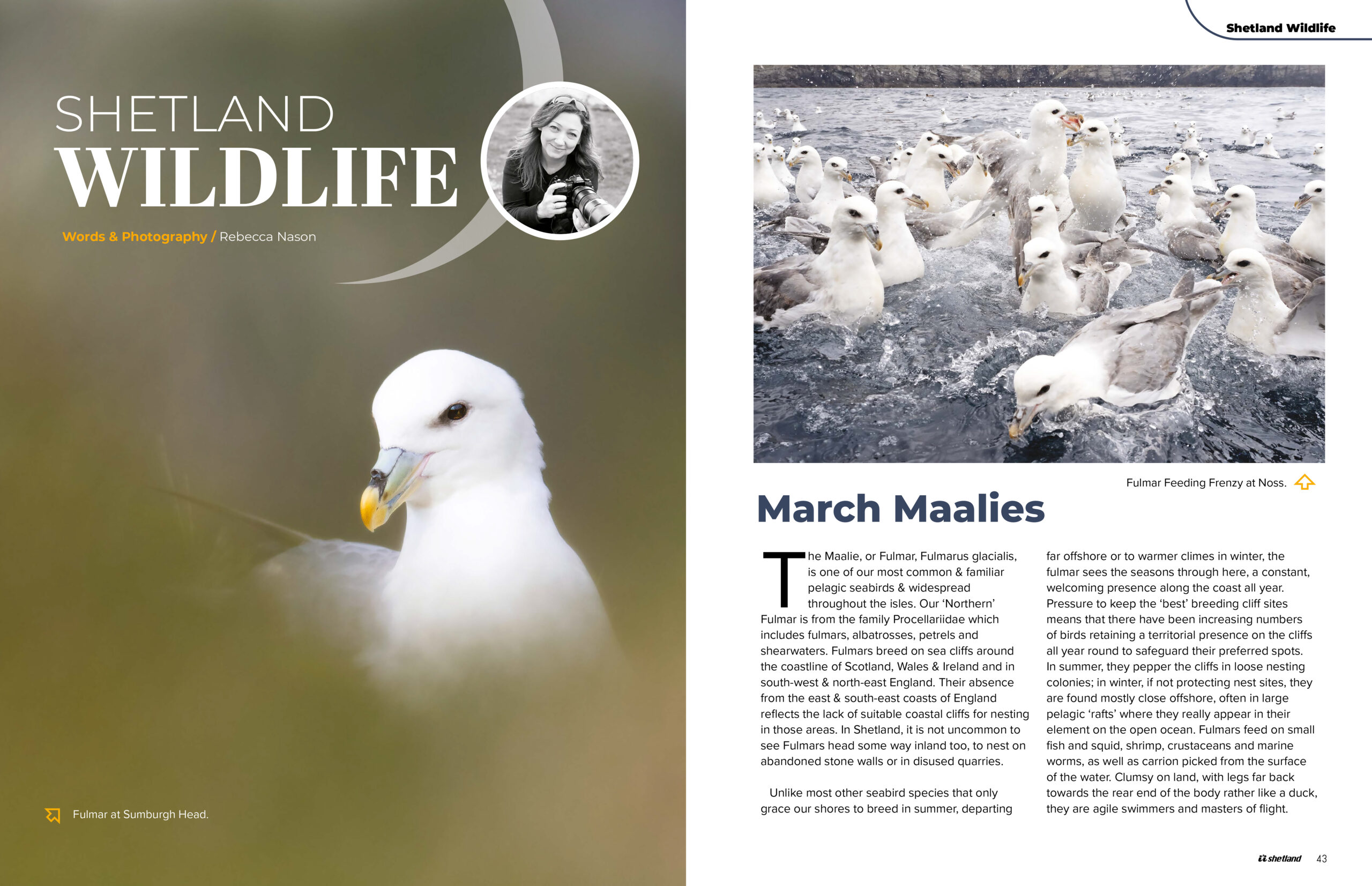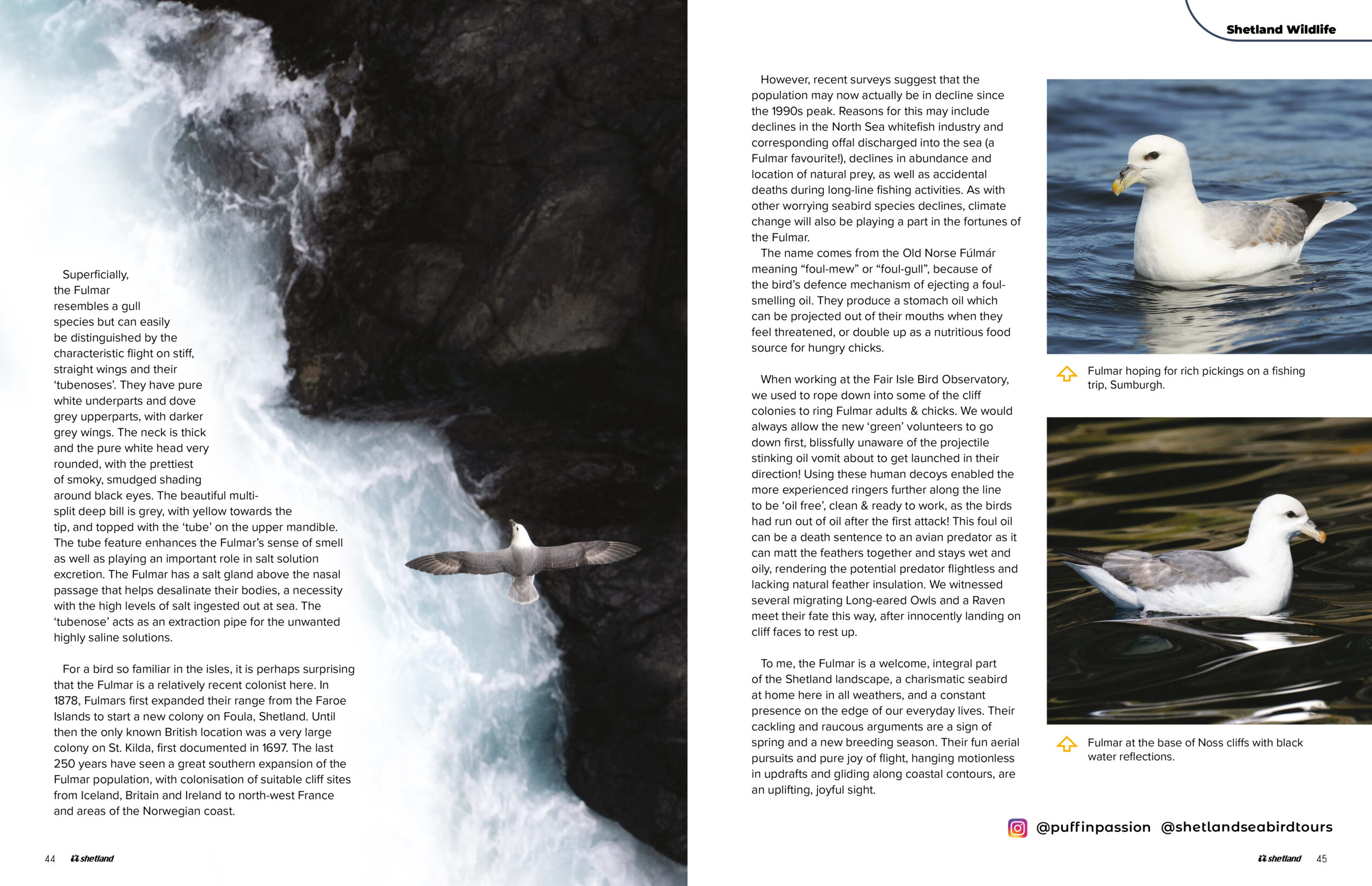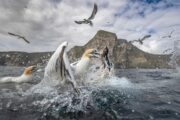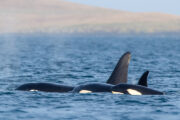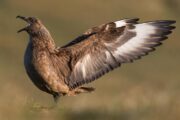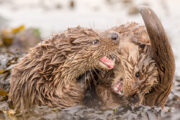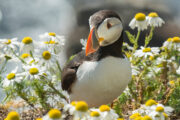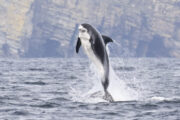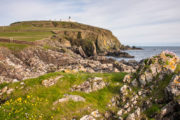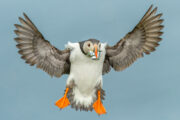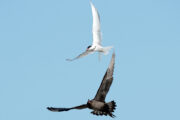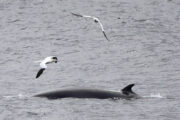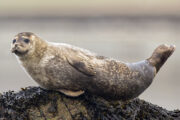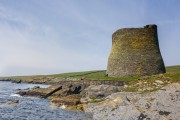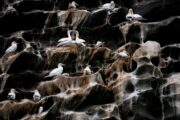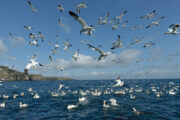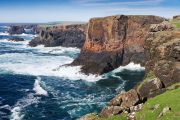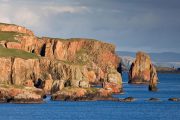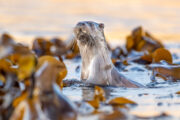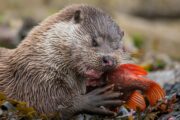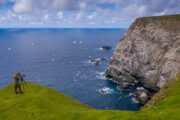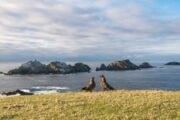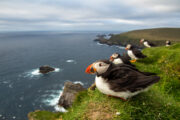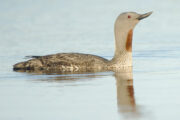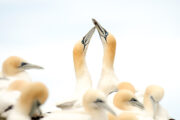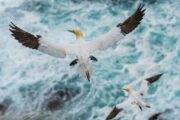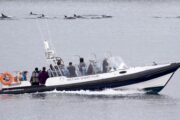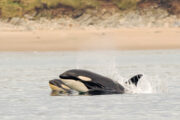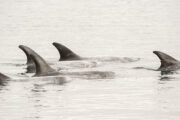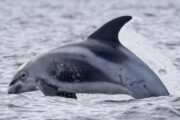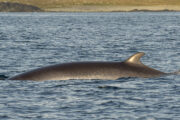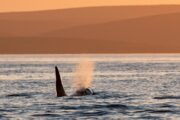MERMAID’S PURSES – SHARK, RAY & SKATE EGGCASES – WHAT TO LOOK OUT FOR ON SHETLAND’S BEACHES
Becoming a marine life citizen scientist – data gatherer & recorder
Shetland has almost 1,700 miles of coastline. You can find many boulder-strewn storm battered beaches as well as gorgeous stretches of white or golden sand. The coastline can look dark and ominous some days and like the Caribbean the next, Shetland has so many beautiful beaches, you are never far from a good one! Spending time on the coast, breathing in the fresh Northern salty air feels good !! and has well known health and wellbeing benefits. Whether you are exercising the dog, having family fun building sandcastles, braving a wild swim, beach cleaning, walking, birdwatching, orca spotting or beachcombing, there are plenty of ways to enjoy our fine beaches. Having spent a lot of my childhood in a flat, land-locked county in England, I have always really appreciated the coast, and over the past twenty years have forged a deep love of Shetlands coastline and marine environment – indeed I could never move away from the coast and the sea – it has become my happy place for both business and pleasure!
As a family, we spend a lot of time in the winter and spring months walking and beachcombing on our favourite beaches. We look for dead seabirds as part of beached bird surveys, hunt for groatie buckies (cowrie shells), rare sea beans and drift seeds from South America, pea urchins, sea urchins and sea glass. On many walks, particularly after storms when seaweed mounds are strewn across the tideline, we look for mermaids purses, otherwise known as shark, ray and skate eggcases. It is unusual to leave a beach and not have at least a couple of eggcases in our pockets. Beautiful rectangular or square empty vessels, light and wonderfully variable in colour, they are always a joy to find! Our eggcase journey began many years ago when, on finding our first few, we were keen to find out what species they were from and how common or rare they were. This is when we came across www.sharktrust.org a fabulous website and resource we have revisited many times since. Here you can learn about the different species in UK waters (and beyond!) and about their unique lifestyles. You can identify eggcases you find using their excellent identification charts (see an example below), they even have child friendly identification charts and themed eggcases hunts like the Easter-themed one! Once you identify your find, you are encouraged to submit your record on the easy to use recording page where you can upload a photo, add your species, location and date.
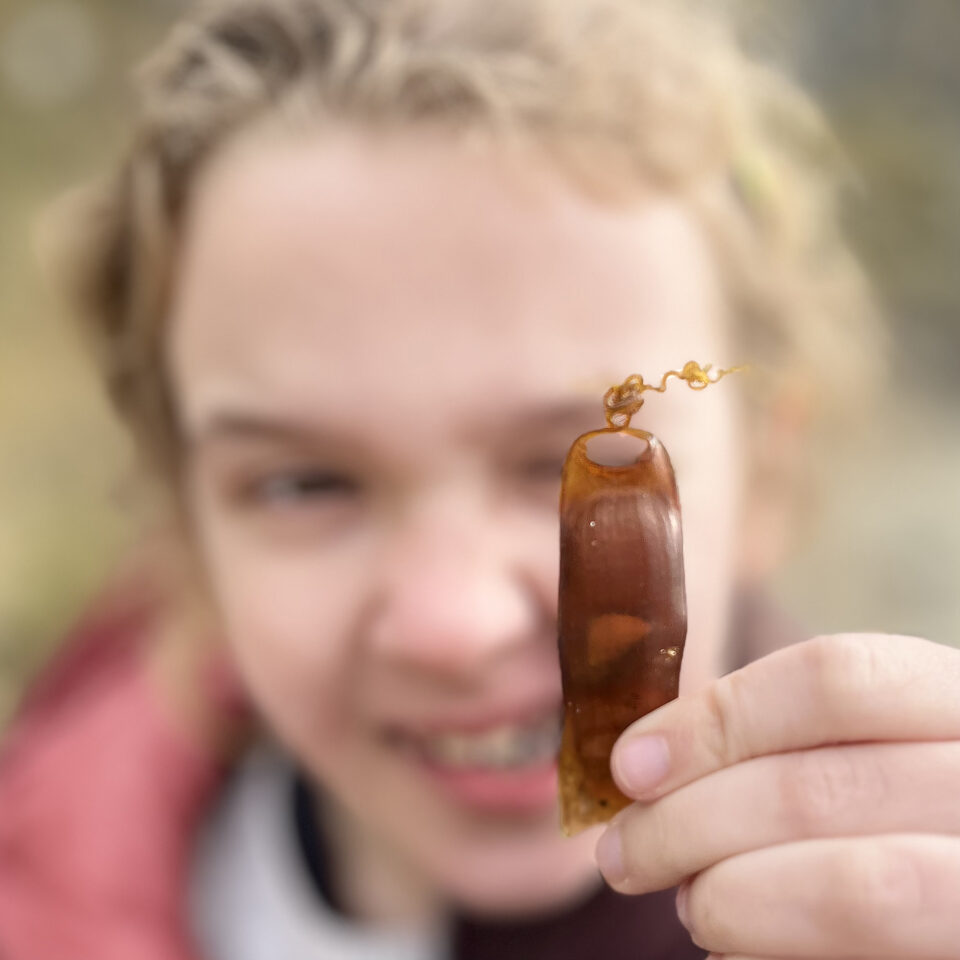
“We believe in the power of collective action. Citizen science is a great way to get more people involved in shark conservation and research. And solve the problem of data gaps at the same time. Research is the first step to conservation. We need to know as much as we can about how a species lives and the threats they face. This enables us to make well informed decisions to help better protect them. Over the years we’ve built up some major citizen science projects, including our flagship project the Great Eggcase Hunt.The power of citizen science is that it allows us to collect vast amounts of data. It also helps us pinpoint where further scientific study is needed”.
“Some sharks, and all true skates, reproduce by laying eggs. These are surrounded by a tough leathery capsule that protects the embryo as it develops inside. After several months these are ready to hatch, and a fully-formed shark or skate will emerge. Please note that in the UK many skate species are referred to as rays in their common names. Once empty, the eggcases (or mermaid’s purses) often wash up on the beach. One of the best places to find them is among the strandline, where the seaweed washes up. The eggcases of different species vary. So, by looking at the size, shape and features, we can tell which species laid it. You can learn to identify eggcases too”
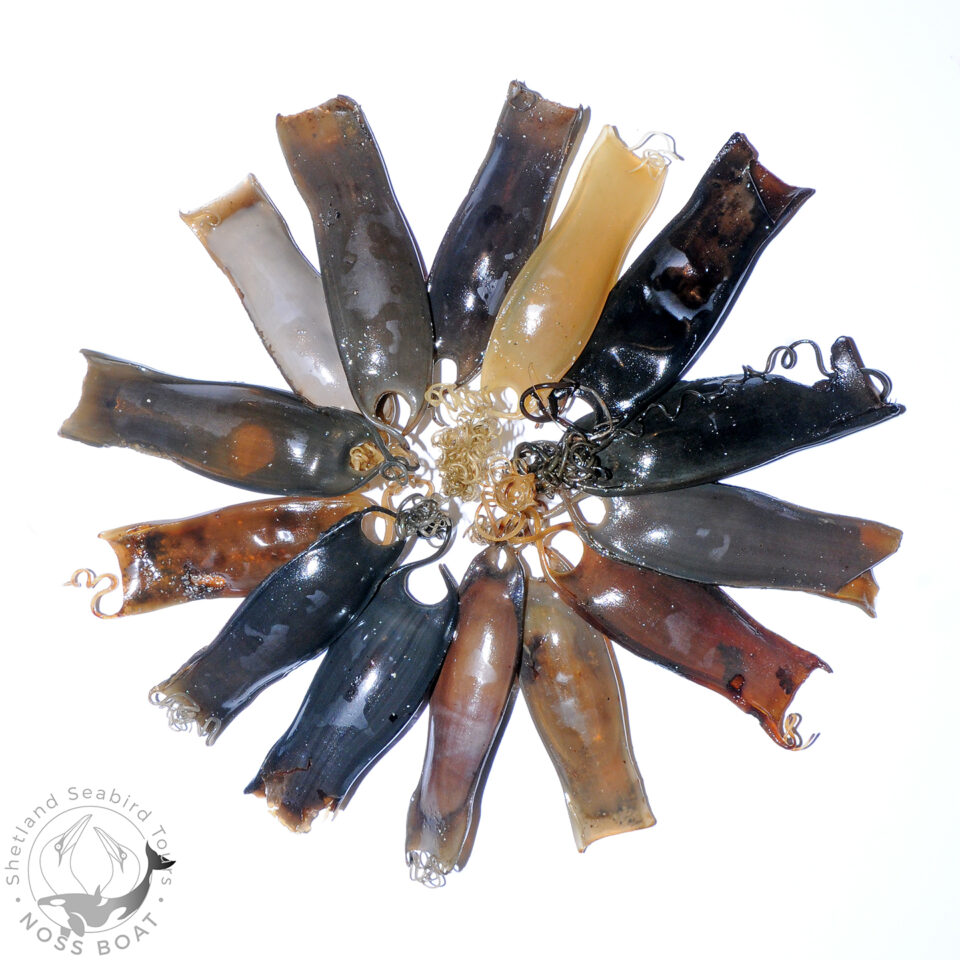
“The Great Eggcase Hunt has helped us to build a clearer picture of which species are present around the world, and more specifically around the British Isles. To date, 98% of our records come from around the British Isles, totalling over a whopping 430,000 eggcases; 87% of which have been verified by either an image, a specimen or expert ID. Though there are around 30 egg-laying species that occur around the British Isles and Ireland, many of these are offshore or deeper waterspecies. Due to this, our ID guide for the Northeast Atlantic contains the species that are most likely to wash ashore; giving us 13 key species for this region. Although the Starry Skate, Blue Skate, White Skate and Blackmouth Catshark are rarely reported, there have been beach finds for these species. In contrast, nearly 55% of eggcases come from just two species: the Thornback Ray and the Smallspotted Catshark!”
“Starting from a chance eggcase find in 2003, this project has grown and spread faster and further than we could have dreamed. 2023 marks 20 years of this citizenscience project, with thousands of people having taken part over the years. Through the tireless effort and commitment of the public and our citizen scientists, the Great Eggcase Hunt now holds records of over 440,000 eggcases! Starting from just 127 eggcases reported in 2003 from around 50 people, we have had over 40,000 eggcases reported in the first half of 2023 alone, from nearly 5,000 people! Better still, with digital cameras and smart phones becoming more and more common, a greater proportion of our records have been coming through with images attached; 87% of our records so far have been verified.” The Shark Trust
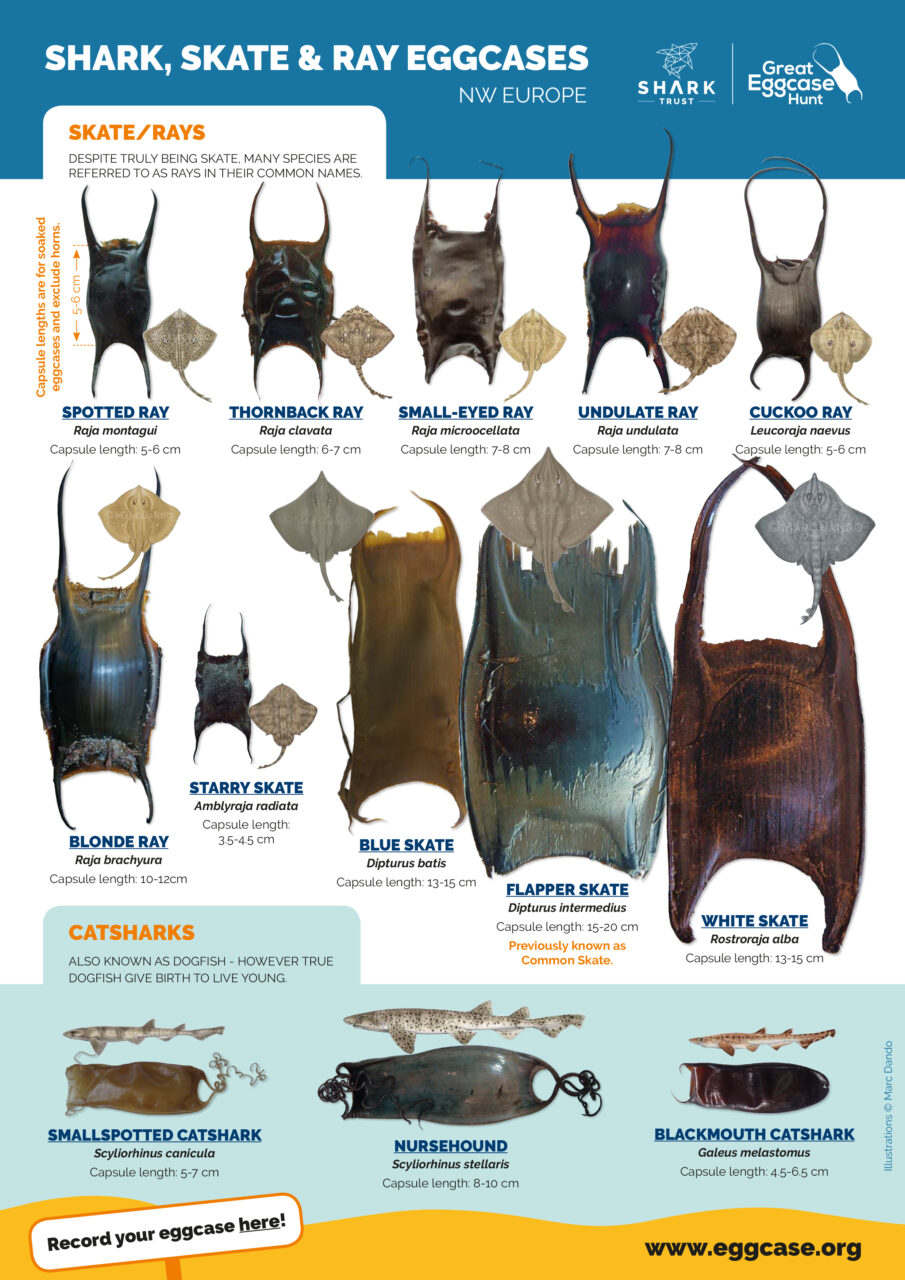
We have found hunting for and then recording eggcases found on Shetland an incredibly fun and rewarding pastime and one which involves and inspires all the family at all times of the year. You can record your finds even easier now with the new Shark Trust Eggcase recording smartphone APP which was released last year:
Shark Trust Mobile App Download Guide
Shark Trust Junior Eggcase Guide Download
Shark Trust Indoor Easter Eggcase Hunt Download
Eggcase Recording Form – Shark Trust
2003 to 2023 THE GREAT EGGCASE HUNT – Records that matter – SHARK CONSERVATION – get involved!
HAPPY HUNTING & HAPPY EASTER!
Rebecca, Phil & Ayda – Shetland Seabird Tours – The Noss Boat
BEST EGGCASE DISCOVERIES – SHETLAND 2024 …….
BLACKMOUTH CATSHARK EGGCASE x 2
“This is an offshore species (mostly at 200 – 500m depth), so eggcases are rarely washed ashore and reported to the Great Eggcase Hunt. Distribution: Within the British Isles, most eggcases have been reported from Porcupine Bank – which is an area off western Ireland. Records: so far we have had 63 verified records, 16 of which have come from the UK and Ireland” Shark Trust
- 4th February 2024 – Bannaminn Beach – Shetland (specimen now with UHI. – Shetland).
- 7th March 2024 – Bannaminn Beach – Shetland
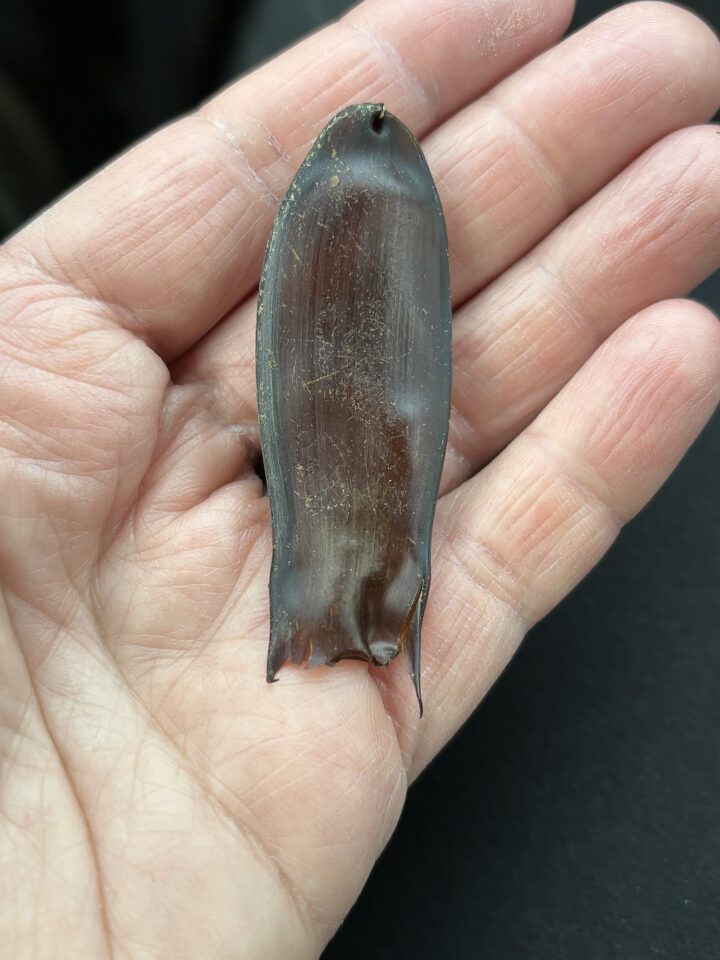
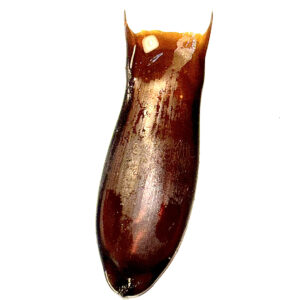
“Not what we were expecting when we woke up yesterday morning……A BELUGA !!! a high Arctic marine mammal in the sub-zero winter wonderland Shetland is currently experiencing, to get to the site was hard enough, but worth every freezing moment for a once in a lifetime wildlife sighting”
A stunning ivory white BELUGA whale was spotted off West Ayre in Hillswick yesterday morning by Margaret and Jeff Tungatt who contacted the admin of the local Cetacean WhatsApp page with the sighting, then made public mid-morning. Phil, Ayda (8) & I tried to head out north but the weather with pure arctic conditions, thick snow & drift made our plans impossible & we turned back. However around 1pm, the weather improved & we again set of north in our 4×4. We made a diversion to pick up good friend & ace cameraman & drone photographer Richard Shucksmith & made it to West Ayre, Hillswick about an hour before dark. The sea was very dark & skies ominous as we scanned the bay, & almost immediately picked up the incredible sight of a ghostly ivory white large BELUGA, regularly surfacing & clearly visible at distance contrasting against the dark water. The large, active animal appeared healthy, feeding & regularly diving for a few minutes at a time, we could even follow it’s white shape below the surface. Beluga apparently feed on various fish species as well as crabs, octopus, squid & snails & this one could be seen up-ending to feed on a couple of occasions.
Richard captured breath-taking drone footage of this rare Arctic & Sub-Arctic marine mammal (seriously doesn’t get better than that please check it out!! LINK here: https://fb.watch/pEVp-PJU8G/ & it was hugely exciting for all four of us to not only watch the animal surfacing & see it’s iconic ‘melon-head’ shape & beautiful tail shape at distance, but also enjoy it ‘live’ via Richard’s drone camera. I got some distant record shots & a nice little video which serves as a perfect memory of Shetland’s 6th BELUGA. It was a very special moment for all of us at Shetland Seabird Tours – The Noss Boat, & one we will remember for years to come. Rebecca has previously seen Beluga in Spitsbergen whilst guiding there is 2012 but it was a world cetacean tick for everyone else. It is still present today 18th January 2024 & we hope if the weather improves many others will get to enjoy seeing they spectacular, iconic Arctic species as the weather improves. It is difficult to know exactly why the Beluga is here in Shetland waters, along with the 5 other Beluga records, we have also had Bearded Seals & Walrus on the Isles of the the last few years. These are all high arctic species & we must consider that these rare but increasing sightings are highly likely the result of climate change & the aptly named climate catastrophe we are faced with today. The strong northerly storms & arctic weather front we have been experiencing of late, may also have caused the Hillswick Beluga to have become disorientated & separated from it’s pod, & of course although it looks healthy, we never really know if there are more serious individual, internal health issues at play. We hope it will feed well whilst here & be able to make it’s way back further north as soon as possible.
https://www.instagram.com/reel/C2N-dtCxOoY/?utm_source=ig_web_copy_link&igsh=MzRlODBiNWFlZA==
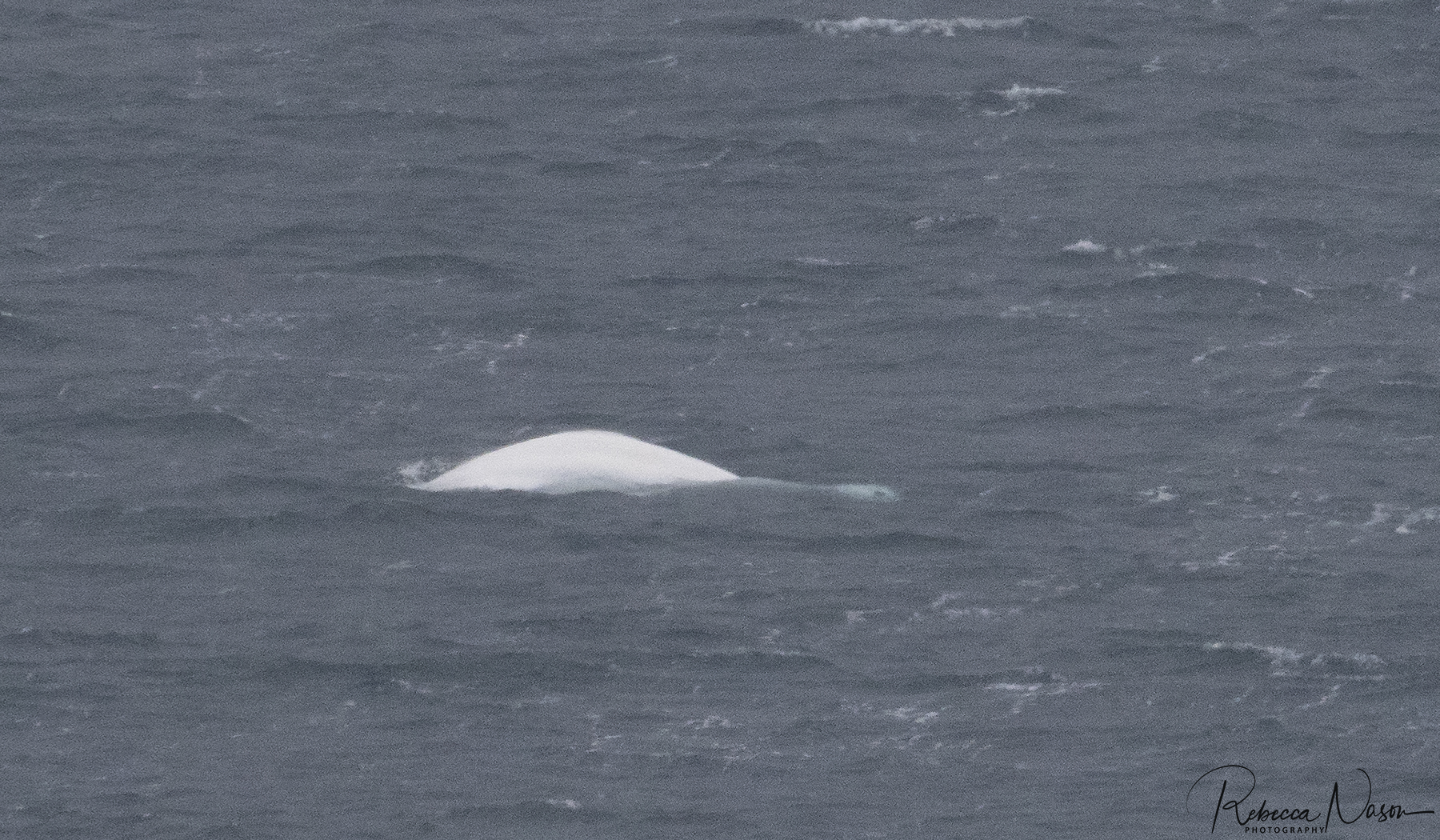
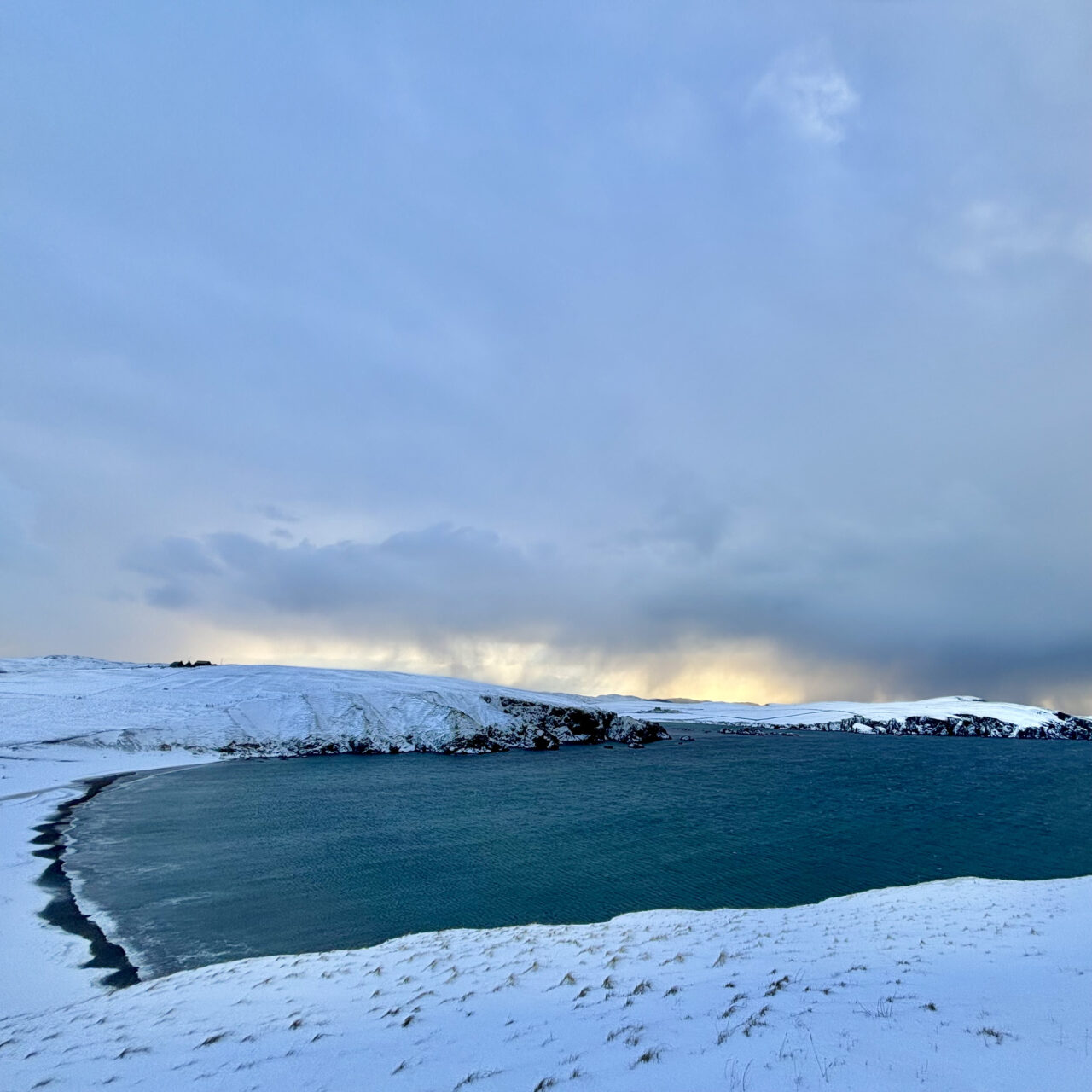
i’i SHETLAND MAGAZINE – OWLING OCTOBER
- Birds, i'i Shetland, local naturalist, monthly magazine, nature photography, Noss boat, OM SYSTEM, Shetland Wildlife, wildlife columnist
- article, autumn birds, i'i Shetland, local wildlife, long-eared owl, migration, monthly magazine, monthly publication, owls, Shetland Islands, Wildlife & Photography

Celebrating Shetland’s Community
“Our popular monthly magazine, i’i shetland, tells the stories of the people and happenings in the lively Shetland community. From local events to personal triumphs and the births of Shetland’s newest residents, we tell the stories of the people that make Shetland the wonderful place it is.
Our magazine is written, designed and published by Millgaet Media, centred around the stunning photography produced by our team of exceptional photographers”
The Noss Boat co-owner, wildlife photographer & naturalist Rebecca Nason, writes a monthly article in Shetland’s popular local magazine i’i Shetland. October’s article was titled “OWLING OCTOBER” and contained beautiful images of Long-eared Owls together with an interesting insight into their lives and their migration through the Shetland Islands. All images taken on Shetland mainland and Fair Isle. November’s article ‘YELLOW FELLOW’ is out now!
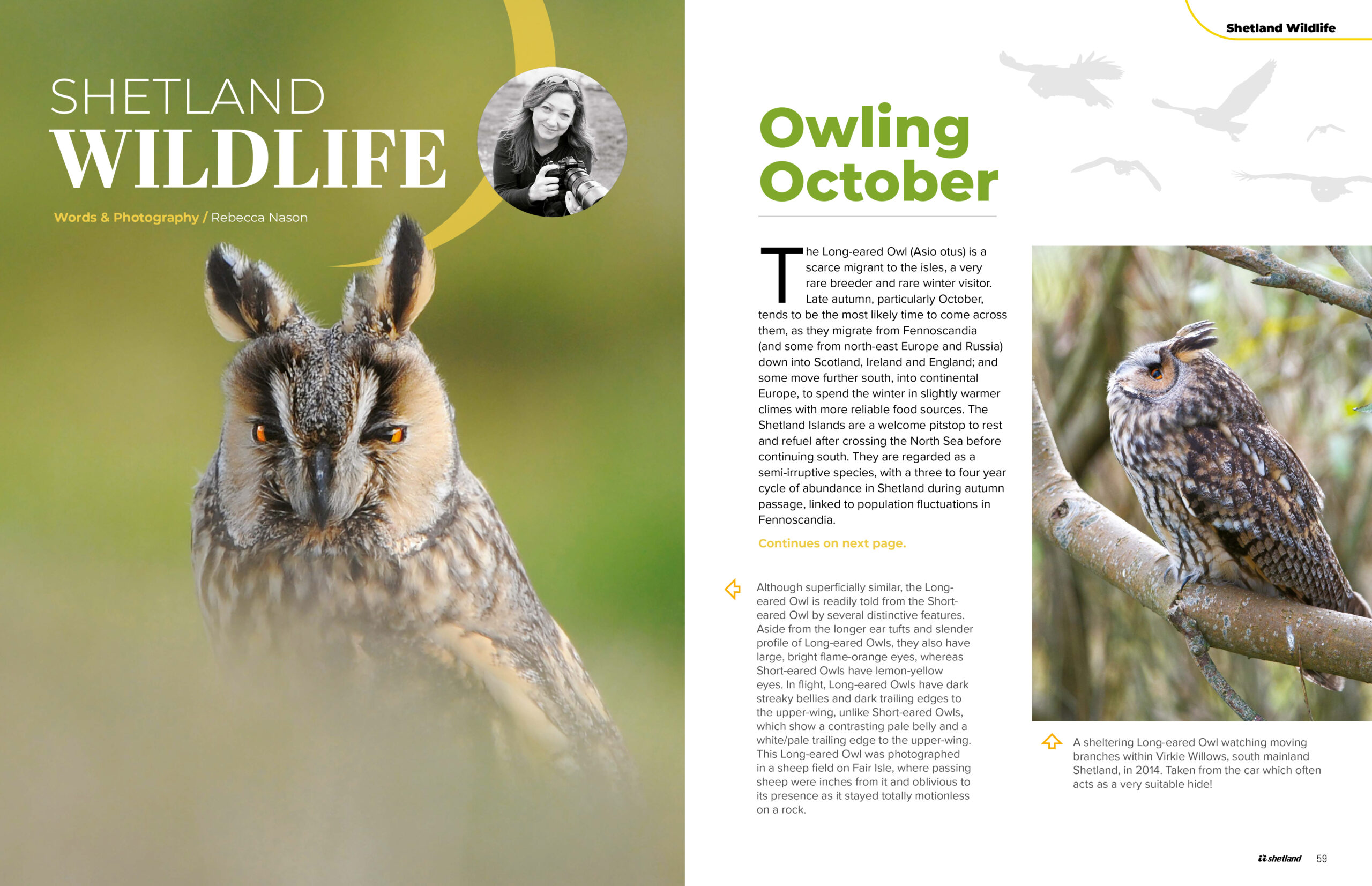
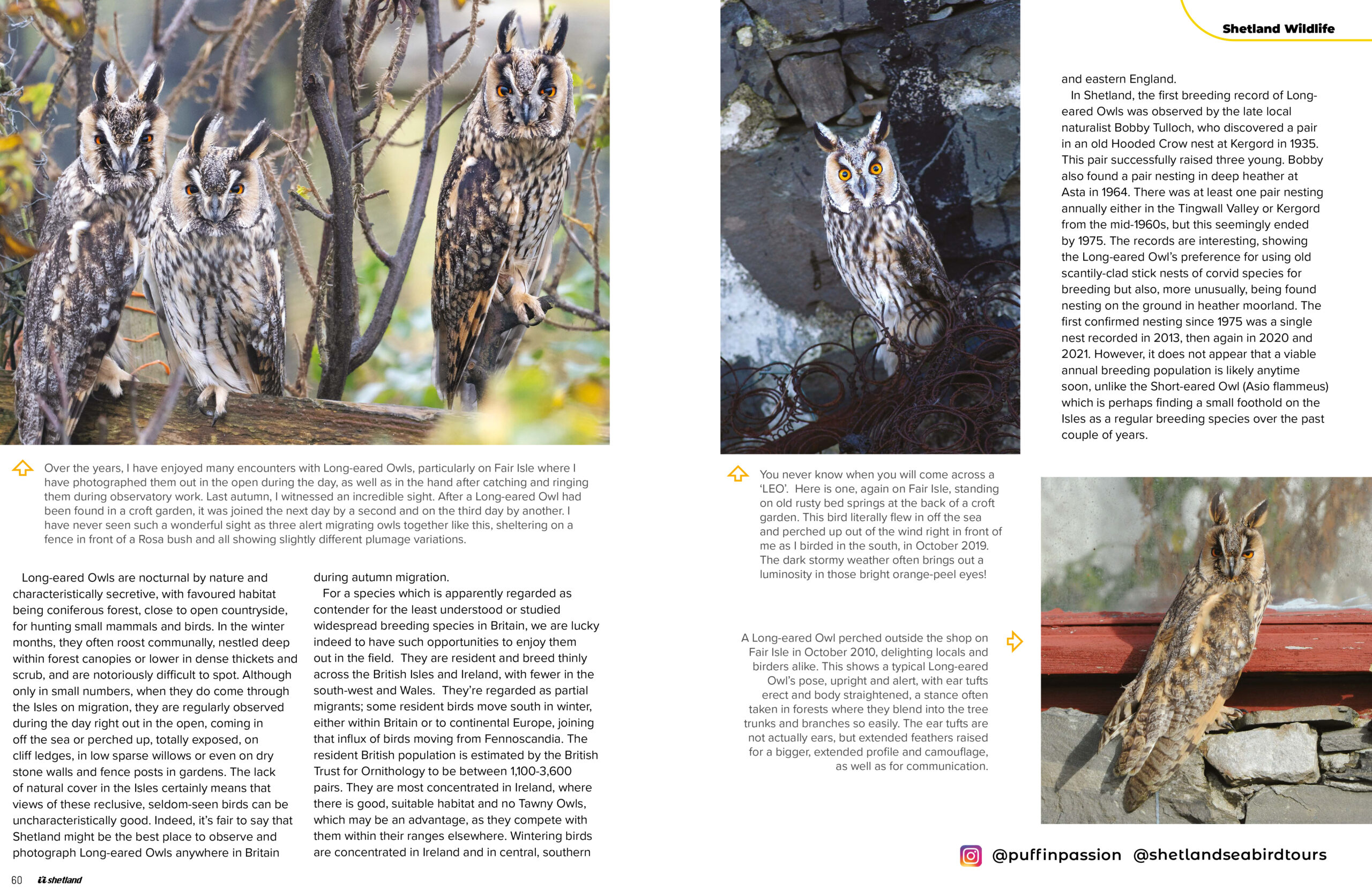
Shetland’s Late Summer Seabirds & Cetaceans
We have been good friends as well as work colleagues of Brydon Thomason for many years & been collaborating with his highly successful local wildlife tour company SHETLAND NATURE since we started our own business in 2016. We are delighted that The Noss Boat tours features in all his seasonal group itineraries, & for the first time this summer, we are part of his new Summer Seabirds & Cetaceans itinerary. Check out his website & some of the tour details below:
Holiday overview:
Seven nights’ all-inclusive accommodation
- Small group size of just six to eight guests
- Led by resident naturalist guides who live/work here all year round
- Unique insight into behaviour and ecology of Shetlands Otters
- Exclusive cetacean search boat charter with Shetland Seabird Tours
- Exclusive boat charter to Gannets of Noss NNR with Shetland Seabird Tours
- Peak season for inshore cetaceans such as Minke Whale, White-beaked & Risso’s Dolphin
NEW FOR 2023!
Saturday 5th – 12th August, 2023
We are delighted to launch this unique new tour itinerary, which focuses primarily on three of Shetland’s star wildlife attractions – seabirds, Otters and cetaceans. Focusing on these throughout the latter weeks of the summer is something we do every year on our day tours and bespoke holiday bookings, but this season, it feels particularly appropriate to add it to our holiday program.
Celebrating the amazing vibe and momentum throughout the UK nature community building around the incredible ‘Wild Isles’ series, this itinerary features three of the series headline acts – Gannets, Otters and hopefully – Orca!
For many of Shetland’s species the brief northern breeding season is already ending by August, yet for most, especially sea birds, the season is in full swing. Though Common Guillemot chicks have left their ledges and Kittiwakes are fledging, Gannetries are a raucous hustle and bustle of activity with chicks still a few weeks from fledging and on the clifftops and grassy slopes, Atlantic Puffins are still present in decent numbers, as are the mighty Great Skuas, which are still yet to fledge their chicks and Arctic Skua give chase to Arctic Terns in their dramatic aerial pursuits. This is also peak time for cetaceans, being the time of year we tend to see the widest range of species inshore, particularly those that are following the Mackerel, Herring and Saithe that amass in our waters in this season.
Itinerary
Day One – Arrival dinner and meet/greet
Our week adventure begins on Saturday evening when we meet and greet you at the Sumburgh Hotel. Over dinner as guests and guide become acquainted, we enthuse about the exciting adventure ahead and this is the perfect time to learn about the islands, the wildlife and indeed life in general in Shetland. This is something we feel plays a very important role in your Shetland experience and with all our core season team of guides being resident Shetlanders we take pride in this. Overnight at Sumburgh Hotel
Day Two – Sumburgh Head & Mousa
We begin our voyage of discovery in the South Mainland, at the Royal Society for the Protection of Birds (RSPB) Sumburgh Head reserve, where we hope for our first Puffins of the week. Sumburgh is the ideal setting in which to start to get to know some of Shetland’s breeding birds, with many of our common species close at hand.
This is also the first of several cetacean watch-points that we will visit, where we keep a keen eye off shore for species such as Harbour Porpoise, Minke Whale, Risso’s and White-beaked Dolphin which are all regularly recorded here in late summer, with a decent chance of Orca too. This is also been the peak time to see Basking Shark here too, which will also be on our radar at all watchpoints.
In the afternoon we take the small passenger ferry across to the marvellous uninhabited island of Mousa. The short ten-minute crossing offers one of the best places in Britain to see Harbour Porpoise. Our walk around the RSPB reserve will take us along cliffs that are favoured nesting places for Fulmar and Shag; also Black Guillemot and Gannet may be seen fishing offshore where we have a good chance of cetaceans too. On the walk we will observe lagoons that are a favourite haul out for both Common and Grey Seal. We also pass a small loch, a favourite bathing pool for Arctic Terns and has been known to accommodate a nesting pair of Red-throated Divers. The final highlight of our visit to the island will be to explore Mousa Broch. This almost complete broch (stone tower) stands 13m tall and is the best-preserved example of an Iron Age (c.300BC to 200AD) broch in existence. Overnight at Sumburgh Hotel
Day three – South Mainland & Noss
Today we venture north. Leaving Shetland’s south Mainland we journey north to the north western part of the Shetland Mainland. Before leaving the south, we enjoy a gentle coastal walk while exploring the nearby peninsula of Scatness, Fitful Head and the picturesque tombolo of St Ninian’s Isle beach, each of which offering the opportunity of sea mammals off shore
In the afternoon we join the amazing, multi-award winning Shetland Seabird Tours for the first of the week’s two marine wildlife boat charters onboard the Ayda Ruby II, with naturalist skipper, Phil Haris who takes us out from Lerwick to the spectacular Noss NNR, home to over 18,000 breeding pairs of Northern Gannets. The colonies and towering cliffs are truly awe-inspiring, followed by an exhilarating feeding frenzy offshore. We will also enjoy many other seabirds here, both on the water and in the colonies above.
Once ashore in the late afternoon we make our way north to The St Magnus Bay Hotel in Hillswick, where we will spend the next four nights.
Day four – North Mainland
Today we begin to explore the magnificent and rugged north-western part of Shetland Mainland. From a geological and landscape perspective, this remote corner of the islands is unique and there is much to admire. At Eshaness lighthouse, the breathtaking views of one of Shetland’s most iconic vistas are guaranteed, and an examination of a nearby blowhole is not for the faint-hearted. If the weather is good, we will spend time scanning for whales and dolphins out at sea. Risso’s, White-sided and White-beaked Dolphins, Minke Whales and of course Orca (Killer Whale) can all be seen from here with a bit of luck, a keen eye – and better still – a calm sea! Harbour Porpoises are the most common cetacean and perhaps more predictable, and we should be able to find these at our regular sites.
In the afternoon we venture up onto higher ground, up to the tele communications mast on Collafirth Hill, which shoulders Ronas Hill. At 450 metres above sea level, Ronas Hill is hardly a mountain yet it is the highest point in Shetland. Overnight at St. Magnus Bay Hotel.
Day Five – All About Otters
Unique to Shetland Nature, we will spend the day devoted to one of Shetland’s star wildlife attractions, the Otter! In the absence of Badger or Fox, the Otter takes centre stage. With a higher density than anywhere else in the world, it is little wonder that Shetland has long been recognised as the best place to see and study this wonderful mammal.
It was in fact around this very species that Shetland Nature was evolved, through co-author of Otters in Shetland- the tale of the draatsi’ , Brydon Thomason’s lifelong passion and experience of them. It is little wonder that Otter watching is therefore our signature specialty, and we pride ourselves on the insight and encounters. We have yet to have a group leave disappointed and we have every confidence in our continued success.
Here is one of the many areas that our guests experience first-hand the benefits of our small group size and the leadership of local naturalists. Our approach is based on our unsurpassed knowledge of Shetland’s Otters; where and when to stand the best chance of encounters and most of all how to search and observe without disturbance. We will visit some of the best sites in the islands to give you a unique insight into the secret lives of one of the nation’s most evocative and captivating animals.
Our sensitivity towards Shetland’s Otters is as renowned as our success with guests’ encounters. We operate under a government legislation Schedule 2 license issued by Scottish Natural Heritage. Overnight at St. Magnus Bay Hotel.
Day Six – Unit
Today, for the penultimate full day of the itinerary we journey to the very top of Britain, the island of Unst. Island hopping from Mainland to Yell and again across to Unst, the ferries offer the perfect opportunity to scan the sea for cetaceans.
On Unst we begin our North Isles experience by savouring the rich flora and fauna of Unst and head out onto Hermaness National Nature Reserve. Setting out on foot through the heart of the reserve, we can guarantee ‘up close and personal’ encounters with Great Skuas, known locally as Bonxies, which nest in large numbers on the moorland interior. Reaching the spectacular cliffs on the west side of the reserve, we hope to be first greeted by Puffins before breath-taking views of Muckle Flugga and the most northerly lighthouse in Britain. These and the surrounding stacks and cliffs boast well over 22,000 breeding pairs of Gannets, the largest colony in Shetland.
During the afternoon, we will take our time exploring the lesser known corners of the island and some of our favourite cetacean watchpoints and otter sites and leaving the island, again have a chance of a fin from the ferries. Overnight St Magnus Hotel
Day Seven – Cetacean Search boat charter
Today, on our final full day of the trip we join Shetland Seabird Tours once again for an extended and exclusive marine wildlife adventure. Leaving Lerwick in the morning, we set out specifically in search of cetaceans, with species such as Harbour Porpoise, Minke Whale, Risso’s and White-beaked Dolphin all regularly recorded, and our main target species – not to mention Orca, with a bit of luck.
Being actively involved in the local sightings group, and quite likely, Phil’s up-to-date sightings on their previous days trips on board the Ayda Ruby II we will head out in search of whales and dolphins for the morning.
After lunch and back on dry land, we take time to explore and enjoy central Mainland, visit some of the more secluded side-roads of the East and West, enjoying a leisurely safari-style adventure in search of Mountain Hare, Red Grouse, Otters as well as a cetacean watchpoint or two!
Over dinner in the evening we reminisce about the week we have had, the places we have been and the species we have seen before bidding you a fond farewell, as your holiday comes to an end after Breakfast the following morning. Overnight Sumburgh Hotel.
Booking – Holiday Dates
Principal Tour Guides
| Saturday 5th August to Saturday 12th August, 2023 |
Private Tour Options: This holiday can also be arranged exclusively for private booing for couples, families or small groups.
Contact us for information and cost proposal for your own exclusive/tailor-made holiday. Email: info@shetlandnature.net
Additional holiday information:
- Read about the hotels we use – view our hotel providers.
- All meals, accommodation, guiding fee’s and excursions as well as ferry fares and transport are included in package cost.
- All boat trips are subject to weather availability.
- Not included in cost are items of a personal nature or hotel bar tabs nor is travel to and from Shetland included.
- No single supplement charged.
- On booking please advise of any special requirements medical or dietary.
- Throughout the holiday some of the activities will potentially involve walks of up to three or four miles (maximum in a day) and at times over uneven terrain. A reasonable level of fitness is advised however this is run at a leisurely pace. We can also provide holidays at an even more leisurely pace; please contact us for details.
- Please note that all itineraries are subject to change but guests will be advised in advance should it be necessary to make any major changes.
Shetland Seabird Tours – joins the team at i’i Shetland with a monthly double page Shetland Wildlife article. A wonderful opportunity for Rebecca to share some super local wildlife encounters and photography! First article out now in the JANUARY 2023 ISSUE. We hope you enjoy the forthcoming articles…..
“Home of i’i shetland and Malcolm Younger Photography
Here at Millgaet Media we have been creating exciting and cutting-edge media for our local community and beyond since 2004. Based in the beautiful surroundings of Shetland, we take our inspiration from the stunning landscapes and of course, the people who make our islands what they are.
We are best known for our popular monthly magazine, i’i shetland telling the stories of the people and happenings in the lively Shetland community. Our office and studio is also the base of experienced Shetland photographer Malcolm Younger, capturing beautiful individual and family portraits for any occasion”.
